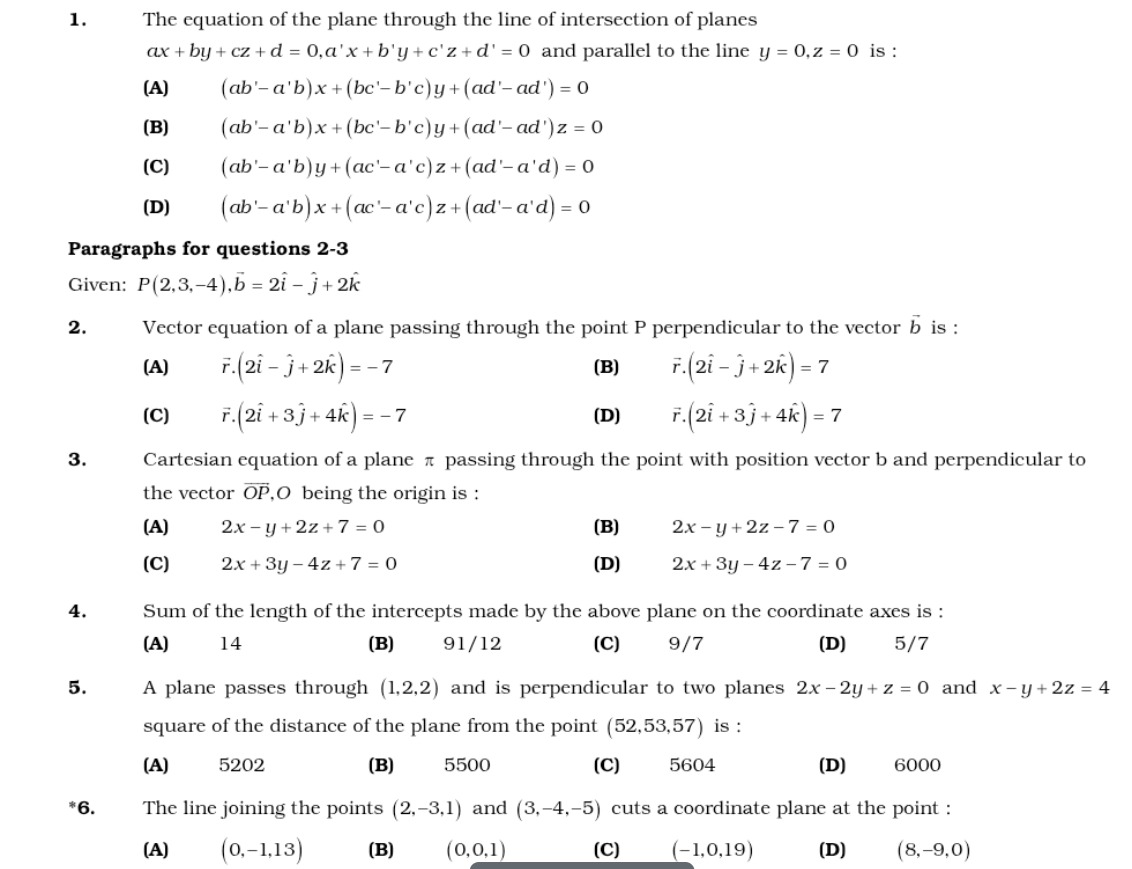Question
Question: The equation of the plane through the line of intersection of planes ax + by + cz + d = 0,a'x + b'y ...
The equation of the plane through the line of intersection of planes ax + by + cz + d = 0,a'x + b'y + c'z+d' = 0 and parallel to the line y = 0,z = 0 is:

(ab'-a'b)x+(bc'-b'c)y+(ad'- ad') = 0
(ab'-a'b)x+(bc'-b'c) y+ (ad'-ad') z = 0
(ab'-a'b)y+(ac'-a'c)z+(ad'-a'd) = 0
(ab'-a'b)x+(ac'-a'c)z+(ad'-a'd) = 0
(ab'-a'b)y+(ac'-a'c)z+(ad'-a'd) = 0
Solution
The equation of a plane passing through the line of intersection of two planes P1=ax+by+cz+d=0 and P2=a′x+b′y+c′z+d′=0 is given by P1+λP2=0. This can be written as: (ax+by+cz+d)+λ(a′x+b′y+c′z+d′)=0 Rearranging terms, we get: (a+λa′)x+(b+λb′)y+(c+λc′)z+(d+λd′)=0 The line y=0,z=0 is the x-axis, which has a direction vector v=(1,0,0). For the plane to be parallel to this line, its normal vector must be perpendicular to the direction vector of the line. The normal vector of the plane is n=(a+λa′,b+λb′,c+λc′). The condition n⋅v=0 is: (a+λa′)(1)+(b+λb′)(0)+(c+λc′)(0)=0 a+λa′=0 This implies that the coefficient of x in the equation of the plane must be zero. If a′=0, then λ=−a/a′. Substituting this value of λ into the plane equation: (a+(−a/a′)a′)x+(b+(−a/a′)b′)y+(c+(−a/a′)c′)z+(d+(−a/a′)d′)=0 (a−a)x+(b−a′ab′)y+(c−a′ac′)z+(d−a′ad′)=0 0x+a′a′b−ab′y+a′a′c−ac′z+a′a′d−ad′=0 Multiplying the entire equation by a′ (assuming a′=0): (a′b−ab′)y+(a′c−ac′)z+(a′d−ad′)=0 This equation can be rewritten by multiplying by −1: −(a′b−ab′)y−(a′c−ac′)z−(a′d−ad′)=0 (ab′−a′b)y+(ac′−a′c)z+(ad′−a′d)=0
